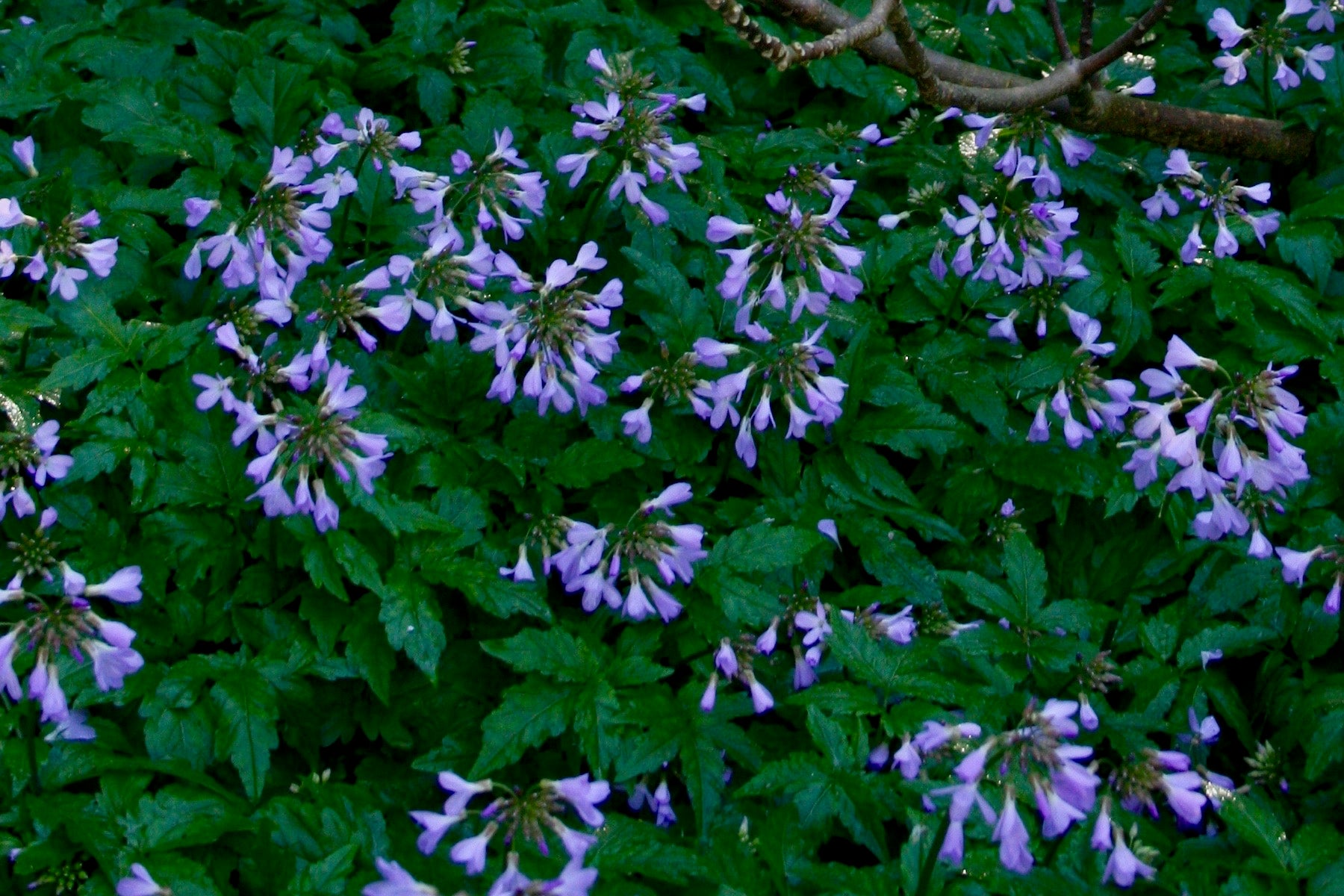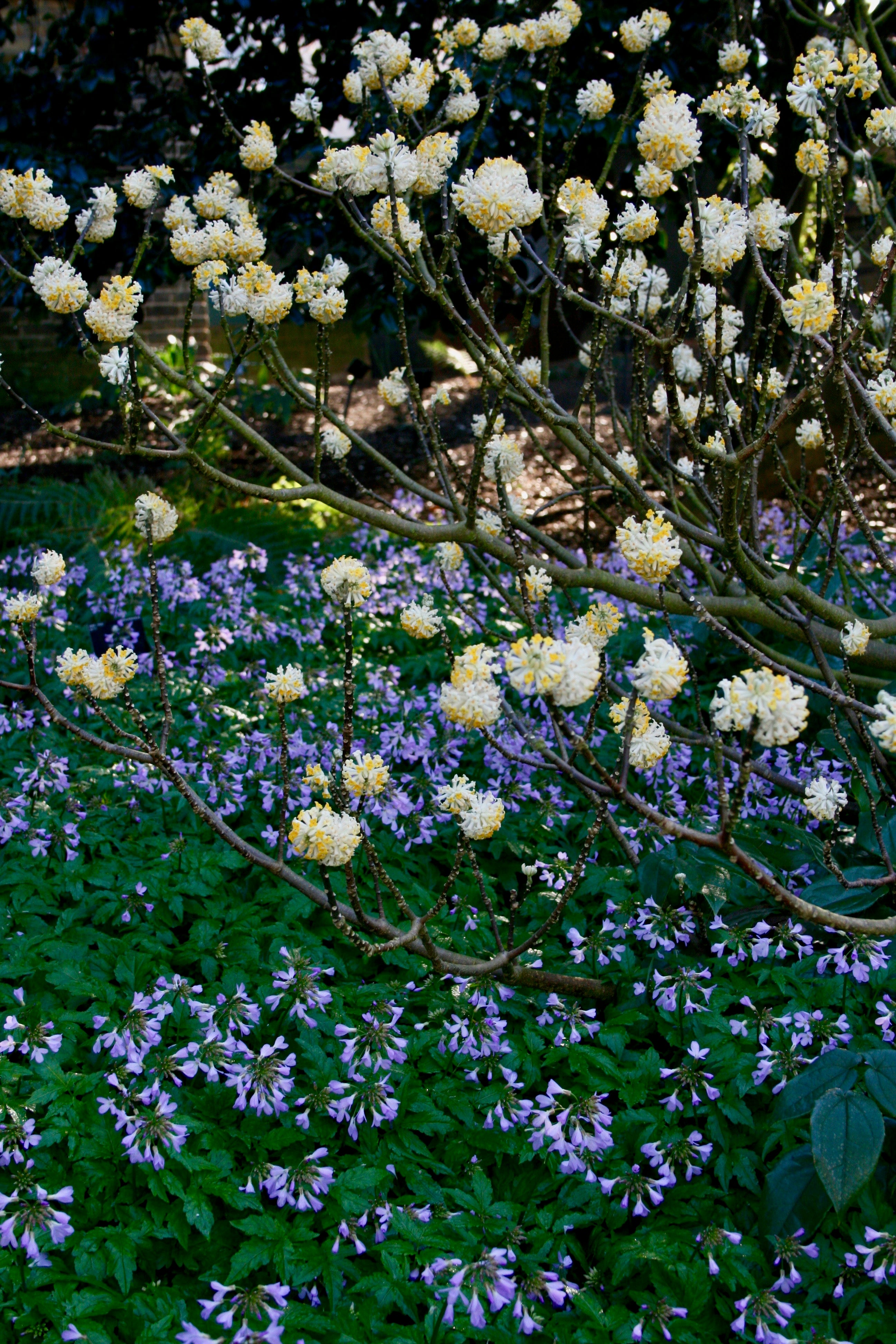Cardamine quinquefolia
Approx. 0.5 litre pot
About this cultivar:
Cardamine quinquefolia is a cruciferous plant species first described by Friedrich August Marschall von Bieberstein. One of the first plants to flower in this garden. Clusters of single, four petalled purple flowers held above attractive divided foliage. Very hardy and a classic spring ephemeral. We love it!
- Position: Full sun, partial shade
- Soil: Almost any soil, grows well in Ballyrobert
- Flowers: February, March
- Other features: Grows well in Ballyrobert
- Hardiness: H5 - Hardy in most places throughout the UK even in severe winters (-15 to -10°C), Fully hardy - grows well in Ballyrobert!
- Habit: Bushy, Clump forming
- Foliage: Deciduous
- Height: 15 - 45 cm (0.5 - 1.5 ft))
- Spread: 15 - 45 cm (0.5 - 1.5 ft)
- Time to full growth: 2 to 5 years
- Plant type: Herbaceous Perennial
- Colour: Purple, green
-
Goes well with: Phlox, Arum and Helleborus. Or Hosta, Begonia and Tricyrtis.
About this genus:
Cardamine is a perennial that sometimes gets a reputation as a prolific self seeder (in other words: a weed), but with careful selection you can find a few ornamental cultivars which are almost sterile. There are 130 species and these are mainly found in the Northern hemisphere, often growing in damp woodland settings. The name "cardamine" is derived from the Greek kardamon, cardamom - an unrelated plant in the ginger family, used as a pungent spice in cooking. It also has a few common names such as lady's smock, cuckoo flower and milkmaid.
Cardamine is a large genus that contains over 150 species of flowering plants. It is in the family Brassicaceae (the cabbage family) and displays the small 4-petaled flowers and slender seed pods that define this group. Generally small woodland plants with attractive lobed leaves, Cardamine usually flowers white or pale shades of pink, purple, or lilac. The leaves arise in autumn and grow throughout winter, followed by clusters of light coloured flowers that emerge for a few weeks in early spring. They thrive best in partial shade and tolerate most soils.
Cardamine is similar to, and compliments, other woodland species that we grow such as woodland Phlox, Arum and Helleborus. As an early spring bloomer you may also want to use summer blooming plants such as Hosta, Begonia and Tricyrtis to stop that part of the garden looking bare in summer.




